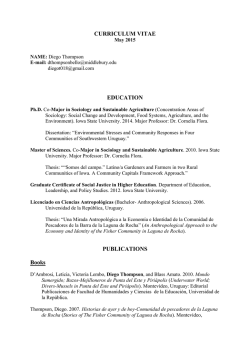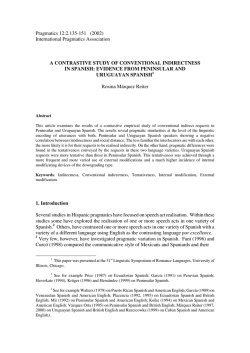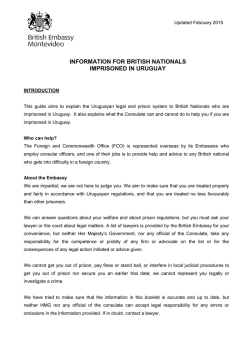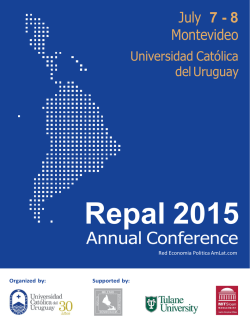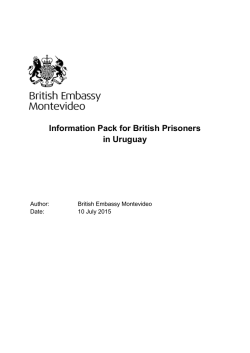
Tupamaros National Liberation Movement
Tupamaros National Liberation Movement ORIGINS, DOCTRINE, AND OBJECTIVES Origins Uruguay 1963 Began in impoverished Northern agricultural region Leader and creator- Raul Sendic Signaled creation of Latin America’s first left-wing urban guerrilla Doctrine No official document outlining doctrine or ideology was created Based in liberal Marxist/Socialist ideals Belief that the many opportunities in Uruguay should be available to all citizens Objectives Fueled by a desire for better treatment of field workers Bring shame to the Uruguayan government Utilized protests, kidnappings, robberies & armed struggle to influence governmental action to resolve field worker issues Provide for the impoverished through robberies → Robin Hood Guerrilla Leadership and Leadership Structure of the Tupamoros Karishma Soni Leader vs Founder • The organization was founded by Raul Sendic in 1963. • The beginnings of the organization started coming together with Sendic making a union for sugarcane workers. • The organization he recreated was a devolved organization to combat the Uruguayan Government. • There is some dispute that though Raul Sendic was the founder, he might not have been a leader. Some say that the organization was structured in such a way that there was no leader and that Sendic was just a primus inter pares, while others say Sendic was the leader of the Tupamaros. Model? • Hydra type network model • If one part is caught or compromised, the entire organization was not rendered compromised as well. At the bottom level of organization, there were cells that consisting of four to five members. Each member went by a pseudonym and therefore didn’t know the real names of any other members including those in their cell. Cell Types Commando • Commando cells had more senior members and focused on the military operations of the group. • The number of members within the commando cells ranged from 50 to 1000 people throughout the lifespan of the organization. Service • Service cells did everything else including but not limited to finding meeting places, creating hideouts, securing food and clothing, accumulating intelligence, giving medical treatment, making explosives, getting as well as securing arms and ammunitions, fixing vehicles, and resolving transport and communication problems Overall Structure of Organization • A conglomeration of many cells in a specified geographical area were called a column. The orders were given to the columns via an Executive Committee. • The Executive Committee ruled the entirety of the organization and it had the power to disband and create cells. • The Tupamaros held a national convention as well, every 18 months though it met only twice in 1966 January and in 1968 March. The convention included a representative from every cell and column. Support for the Tupamaros Laura Isabel English Public Support Political Support Frente Amplio Wide Front Financial Support Erosion of Support End of Support ● 1972 ● Military Crackdown authorized by President Bordaberry ● Dead, jailed or fled abroad Where are they now? Jose Mujica “Poorest President in the World” Strategy Ruth Leal Overview ● ● ● ● Goals Early tactics Urban Guerrillas Outcome Third wave terrorist organization ● ● ● ● Left-wing nationalist Minimum casualties Wanted to overthrow the government Inspired on Fidel Castro’s movement in Cuba and Che Guevara’s “teoria de foco.” Early Strategies ● ● ● ● ● Armed propaganda Highjacking Kidnappings Bank robberies Town occupations Raid of a radio station May 15th 1969, ten members took over the “Sarandi” radio station that transmitted the soccer between the “Nacional” y “Estudiantes de la plata”. The technical crew played a Tupamaro’s recording on a loop, to guarantee high numbers of listeners. New tactic: Urban Guerrillas Justification: - Because of the topographic conditions of the country. It was better to operate in the city. “Robin Hood” attacks: - Highjacking food trucks and handing it to the poor. Targets: - Places with high concentration of security forces. Outcome - The tupamaros’ attack led to elections in 1971. - The military orchestrated a coup d’etat that led to the end of the Tupamaros activities in 1973. - In 1985 Uruguay went back to civil rule and signed an armistice that allow the Tupamaros to participated in government.
© Copyright 2025
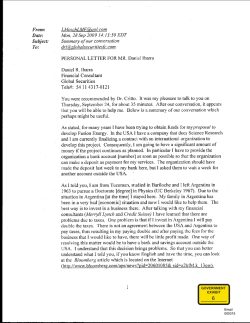
![Curriculum Vitae [pdf.] - Romance Languages and Literatures](http://s2.esdocs.com/store/data/001452293_1-ea49058edf5b9feefb152701b63bf3b3-250x500.png)

